Edinburgh, May 1, 2015
” What we see is not independent of our beliefs. Photographs provide evidence but no shortcut to reality. It is often said that seeing is believing. But we do not form our beliefs on the basis of what we see; rather, what we see is often determined by our beliefs. Believing is seeing, not the other way around.”
-Errol Morris, Believing is Seeing: On the Mysteries of Photography
A couple of years ago my wife and I found ourselves in Edinburgh for a day, traveling between some place or other. For those of you who’ve never been, it’s a really nice town to spend a few days – lot’s of history, good free museums, active and interesting culinary scene, great street life. We were also lucky enough to be there on May Day when Edinburgh celebrates Beltain, the Celtic neo-pagan holiday commemorating the beginning of Summer, the celebration consisting of naked people dancing around fires on Calton Hill overlooking downtown Edinburgh.
Edinburgh is also a great place for “street photography.” Given its latitude and the oblique angle of the sun, you get nice bright light contrasted with deep black lengthened shadows, which makes for the types of visual contrasts good street photographers exploit. And it’s a town of shoppers, for me at least, the perfect setting for interesting and thought-provoking visuals. Princes Street – a half-mile of upscale retail shops running east/west – being as target-rich an environment as I’ve ever experienced. So, of course, the day I was there I walked around snapping photos while the wife shopped for a kilt for her son (yup). The photos I’ve used to illustrate this post were all taken during an afternoon walking Prince Street.
*************
“Street” Photography
Above is a “street photo.” I took it that day in Edinburgh. It’s an uninteresting photo. It says nothing, connotes nothing, implies nothing. It’s just a guy on a street, a throw away shot that doesn’t work on any level. But, hey, it’s properly exposed, it’s in focus, the tonality is nice, it’s framed competently (but what’s up with the big black empty space on the left?) and it’s a guy on a street. Bingo, I’m a “street photographer.” Too many “street photographers” seem to think that’s enough to qualify. If you have any questions, go here and look at what people post on public forums dedicated to showcasing “street photography.” 90% of the photos posted are no better than what I’ve posted above, many even worse. Why? They say nothing. They’re just people walking down the street. Ask the photographer ‘what’s the point’ and in all likelihood, he’ll reply with a blank stare – ‘what do you mean, what’s the point?’
Which gets me to my point. Street photos – any photo for that matter – need to say something. How do you do that? You have something to say. You must have a belief – an idea wishing to be made manifest – before you photograph, and the resulting photos should convey that idea, both individually and as a collective. Garry Winogrand’s 1960’s work, wonky and off-kilter though it was, was the result of a unified vision that worked both individually and collectively, the collective giving context to the individual, the individual stating its own visual truth.
Good “street photography” captures a fleeting moment that stands for something larger. The people and things pictured aren’t just people and things; rather, they suggest something more, some question to be answered or puzzle to solve. What is shown suggests something not shown, hints at it, implies it. It aspires to a reality truer and deeper than anything immediately at hand, something more intense and deeper than the ordinariness of the routine life pictured – what the Greeks called anagnorisis – when the mundane surface is stripped away and the essence is revealed.
*************
Below are a number of photos I took that day in Edinburgh. I think they’re all good examples of street photography that works. They have a theme that runs through them, something I’m suggesting to you. They’re interesting visually and, and, if you’re paying close attention, intellectually. They work both individually and collectively as a series. They have a point of view, something that I’m attempting to communicate to you the viewer. We may differ on what that point is, but the photos themselves admit of something more than their topical subjects, and they add something to each other when they’re viewed as a group. Really, that’s all you need to produce decent work. Just have something to say.


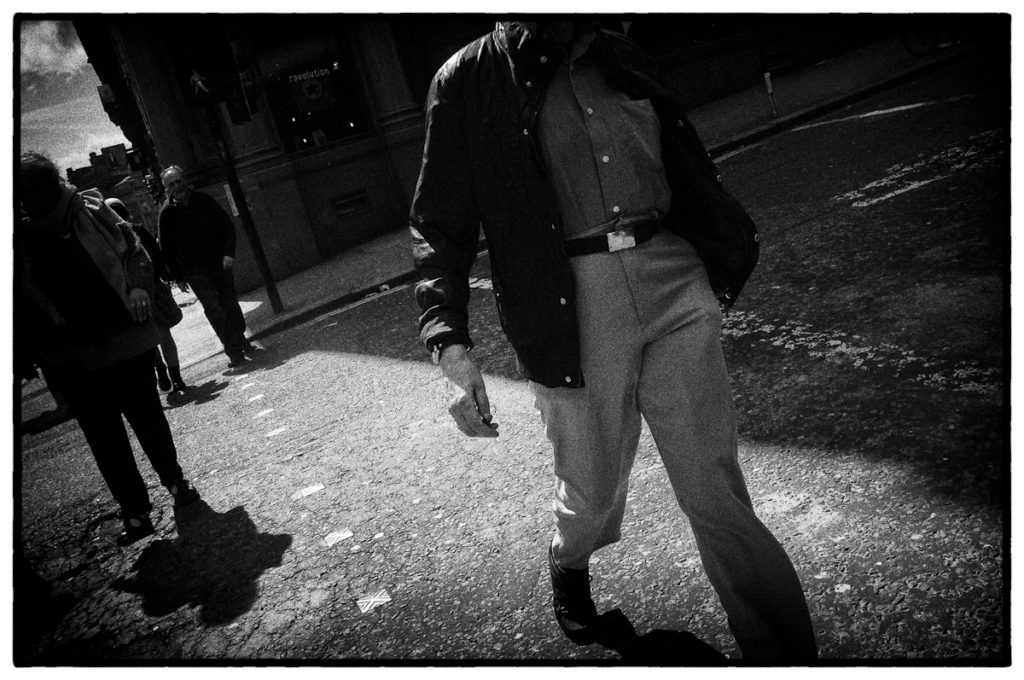
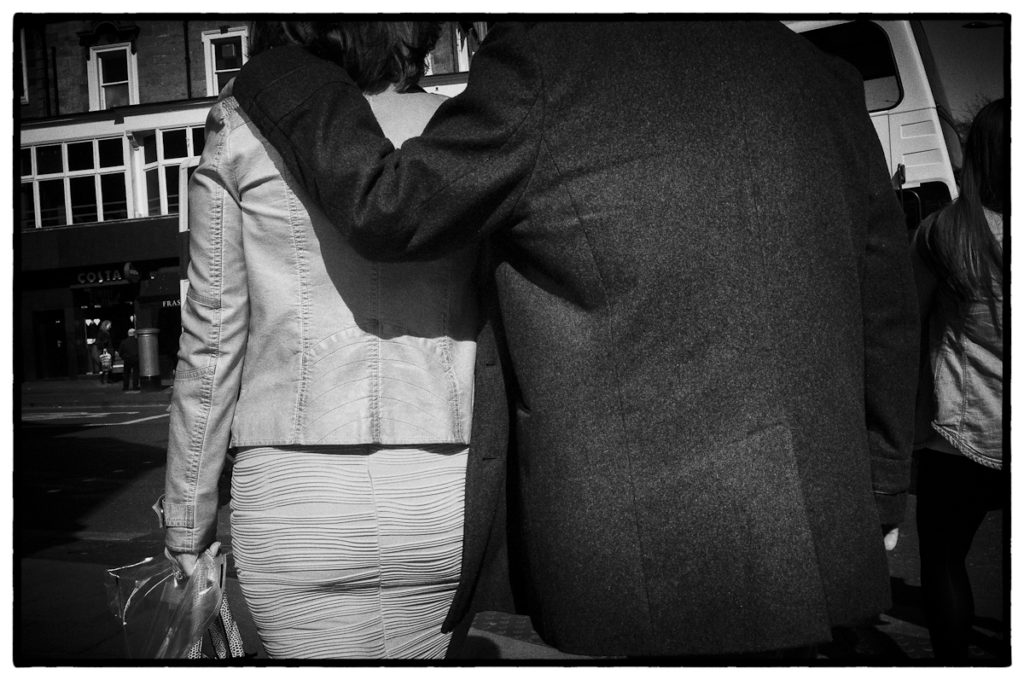
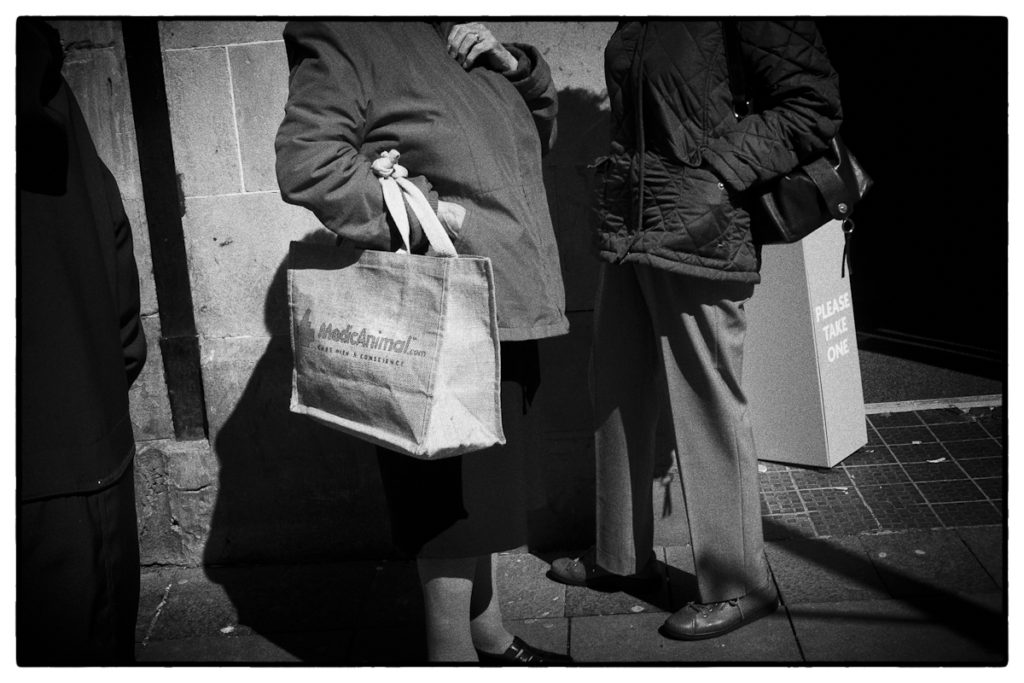

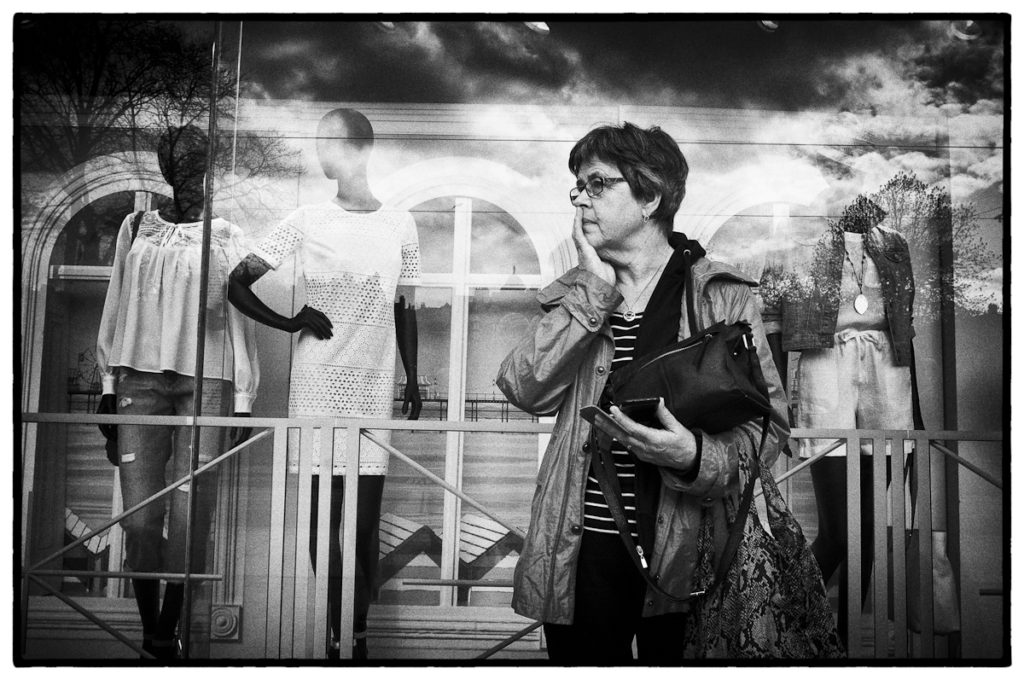
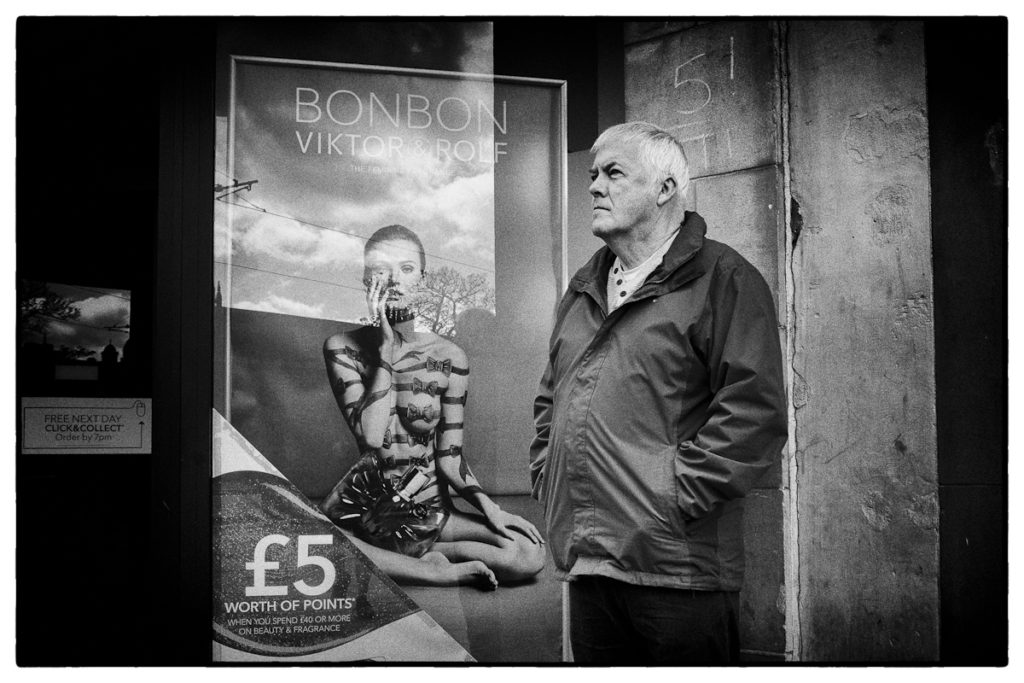

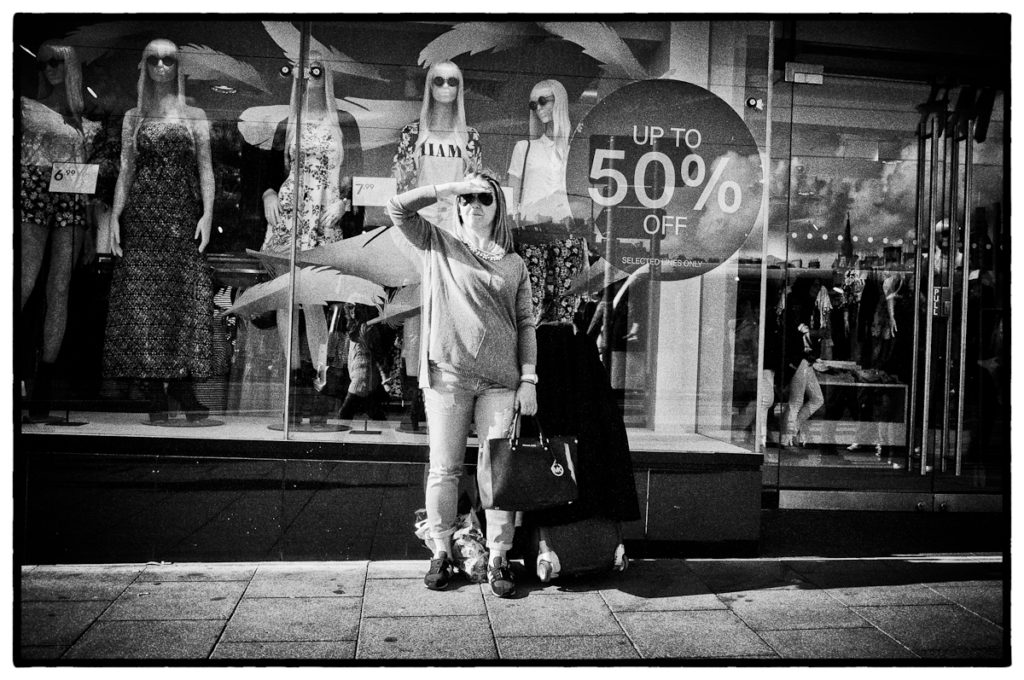

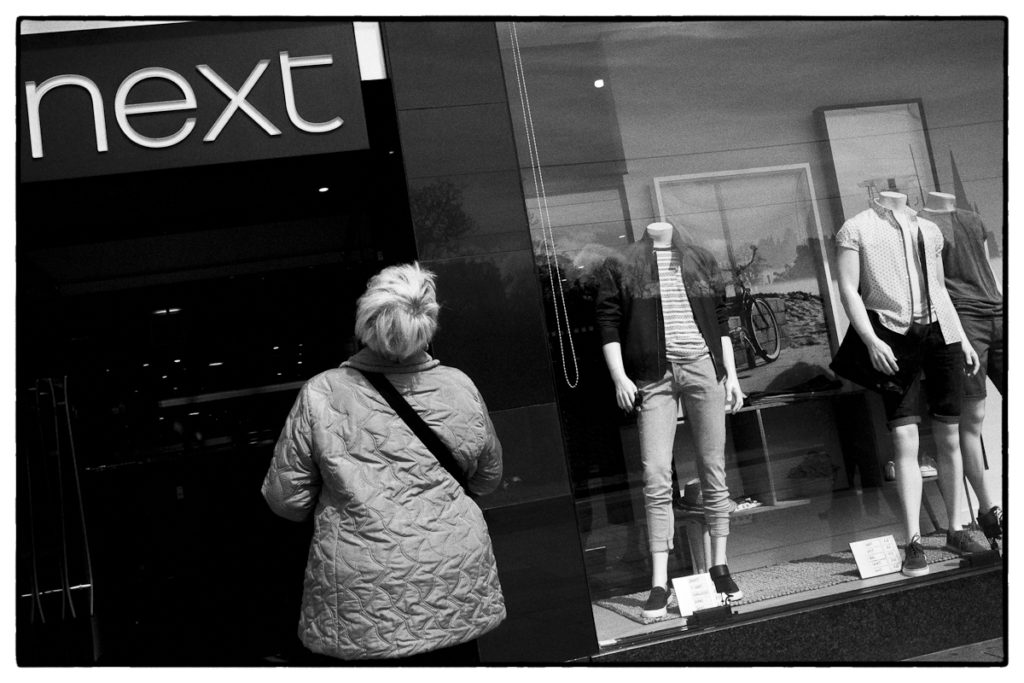
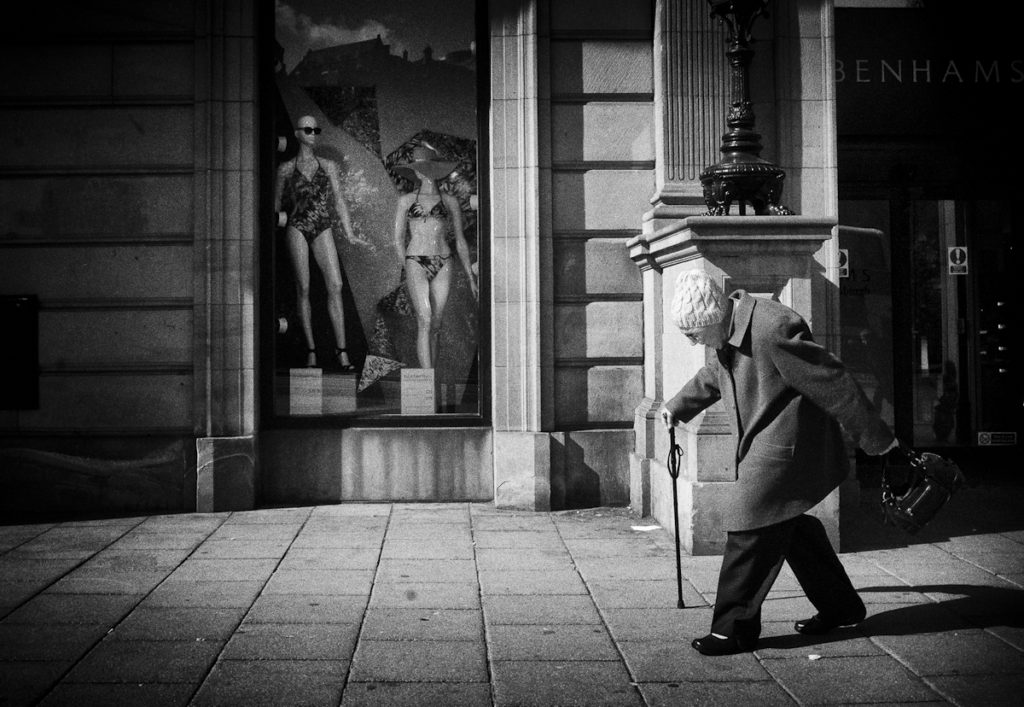
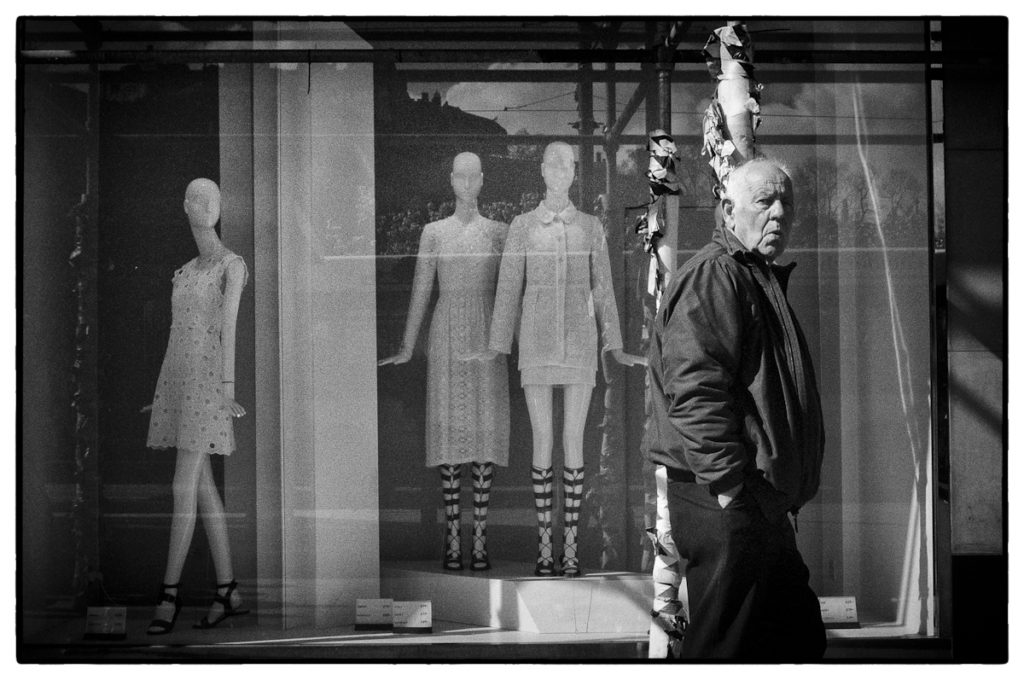

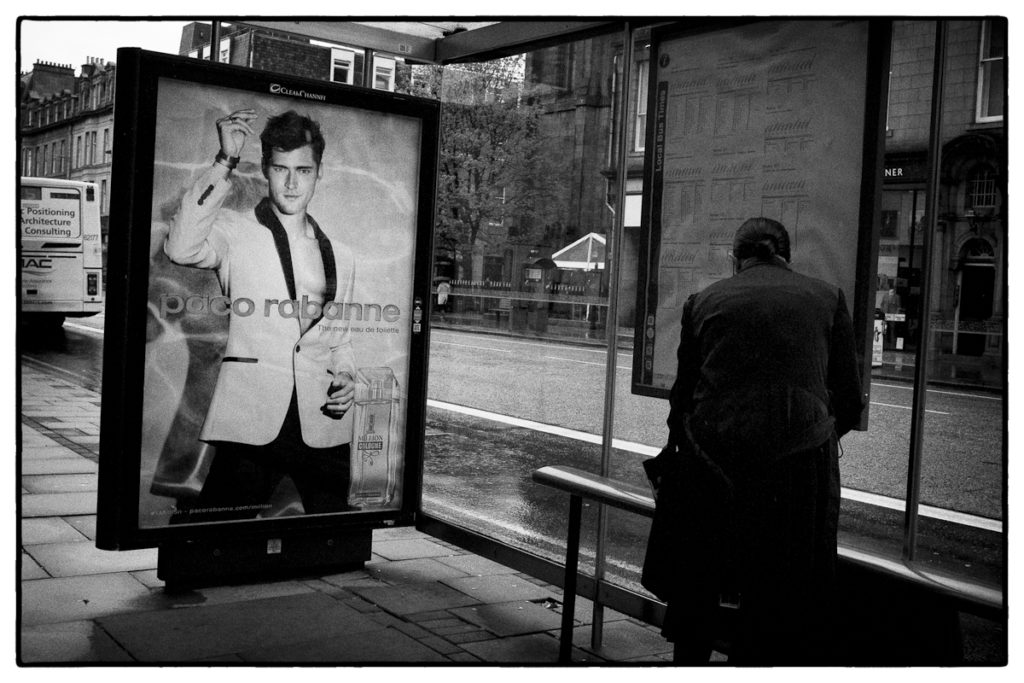
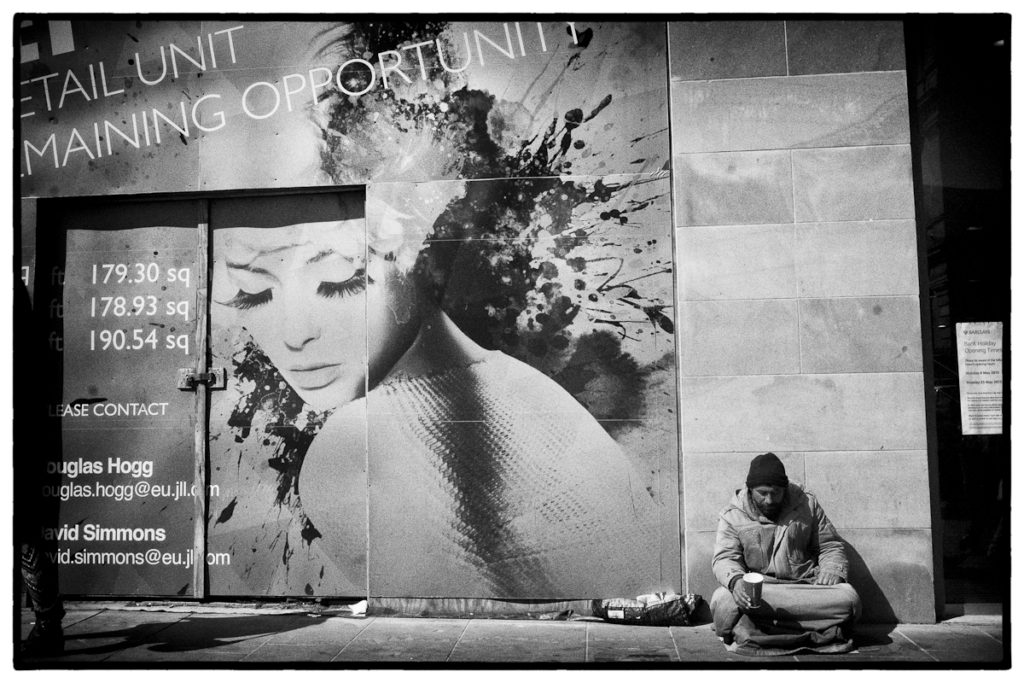

Kudos on your remarks about pointless “street photography”. It’s one of my pet peeves–meaningless photos of anonymous people walking down the street with blank faces. ‘Course that seems to be the public face of the human condition today. Which is why I usually tend to concentrate on human artifacts and detritus rather than the humans themselves. The crap we make and use often speaks more about is than our actual selves. I’ll never make it as a classic “street photographer” I guess.
I like the way you use light, shapes, lines and textures. To me that’s the essence of a good photograph.
“Which is why I usually tend to concentrate on human artifacts and detritus rather than the humans themselves. The crap we make and use often speaks more about is than our actual selves.”
I think you’re right. My idiosyncratic view is toward the images we’re inundated with in our public spaces – adverts especially – and the idealized world they depict. It’s a world so out of whack with the more mundane reality, and the contrast between the two fascinates me. For me at least, that’s an easily accessible subject for the street photographer.
Yep, and those tones are succulent!
On the matter of street subject, I’d agree that street art, in the sense of Leiter’s colour essays, is just as interesting as, if not more so, than his actual shots of people in the streets. Frankly, I think Leiter’s more claustrophobic shots in his apartment are his best people work, fashion stuff aside.
A problem with street, and it’s borne out in Tim’s writing here, is that it also depends on what the shooter brings to the party not just by his framing and sense of timing, but mental state: he may think he sees something that’s simply not there, and once he, the shooter, sees it, nothing will convince him it’s a chimera of his own making.
I tend to get hit the other way: I think I see something, but am disappointed when the image is up on the monitor and what I’d been looking forward to working on is not there, not even remotely. Maybe the moment of the click (mine) is a copy of the other guy’s chimera.
Funny business, photography.
To me, good street photography is when you imagine what happened before the picture and what will come after. You might be right, you might be wrong, who cares, the most important is the imagination. The whole thing is not to show but to suggest which is, all things considered, a difficult balance for a picture.
It’s also, about what didn’t happen.
If you look at the photograph of the woman with the striped top, holding her face just as is the model in the image below that one, think of the difference had Tim caught both women in the same shot, the striped lady holding the same pose.
Had I seen these two shots, been in the same city at the time, it would have been fun to have had my mother stand there like the striped lady and make the shot. Plagiarism? Maybe, but would it have felt less satisfying? In this case, I think not.
It’s a frustrating business as well as a funny one.
😉
Edinburgh, love that city, the Waldorf Caledonian has a whiskey bar to die for!
Your picture of the beggar/homeless man next to the retail space for rent is THE motif of these last few years. Around11,000+ empty apartment in London alone owned by anonymous corporations, forever inaccessible to the ordinary person.
Your pictures showing the old (and therefore closer to death) against the adverts for consumerised-youth, the uber-slim mannekins, the NEW LOOK, the Victor & Rolf sexualised woman in front of which the very image of old-age: white hair, decaying face, a plain mac, alone or waiting for the worn-out spouse?
My poor attempt at trying to interpret your theme and thoughts behind the pictures, am probably completely wrong!
It seems to me street-photographers end up heading for one of 2 directions: towards the light-hearted and novel, or towards the dark and grimy.
JR
“My poor attempt at trying to interpret your theme and thoughts behind the pictures, am probably completely wrong!”
No, I think you’ve done an admirable job of articulating the theme I see behind the series of photos. They’re photos that work only when viewed both aesthetically AND intellectually, the intellectual aspect being crucial for “understanding” the series.
The “NEXT” photo is a good example. It’s not strong formally – it’s wonky and off-center, or more appropriately, de-centered. It doesnt really give the eye an easy place. to fix on. The viewer is going to have to really look at it to figure it out.
What it says to me: three headless bodies lines up, attired in the latest fashion offered to the real person observing them. The picture works for me because of the confluence of three things: 1) the headless (i.e. brainless) manequins, 2) the toussled head of the shopper, her head in line with the headless manequins, and 3) The NEXT sign with the gaping maw of the retail store. It’s as if the sign is saying ” come on in. Lose your head too. Become one of us, just a headless, brainless consumer wearing the uniform we sell you.
Either that, or it’s just a shitty “street photo.” Take your pick.
Or perhaps visual pun?
“Sexualised woman” is off-key, IMO.
Women are, and have always been sexual beings in my experience, attempts by the “morally well intentioned” to make it not so notwithstanding.
From the time they are little girls they have a huge interest in femine things, and folks can hurl the old “nature or nurture” argument as long and as hard and as far as they like, but I have had a daugher of my own and stuck around to watch her grow into the woman she is today, more than a half-century later. My experience of my two granddaughters proves to have been no different, except that I don’t get to see them much these days – and both have studied hard and done very well – one a lawyer, the other a doctor. Their interest in fashion is every bit as alive now as it was when they were teens. Because women are not desexualised robots. They are perfectly capable of knowing the difference between dressing for work or for a night on the town, and make no mistake, the latter is a lot of fun and gives them a buzz as well as a bit of a laugh.
Something a lot of men don’t realise is that women are not disinterested in how other women look; the fashion magazines, bought mostly by women, have a lot of skin on display. One must not listen only to the sounds of the sad ones that suffer from lack of self-belief and end up in hospital or worse; those folks have problems before they reach puberty and awareness of all that sex implies, and its importance in everybody’s life. Models were always different, and before all this crap with social media began to create zombies and victims, girls didn’t often starve themselves to death because of what they saw in the magazines or the movies, or on tv. Hell no, they became fans of those superwomen, just as did the men.
Why would we deny the young their day at the front? Everybody gets that gig, and they make or do not make the most of it. I’m as old as you can imagine, yet that sure doesn’t make me feel sorry for myself and even less does it make me resent the young and beautiful! Thank God for the young and beautiful; imagine if everybody was old – or grotesque in some way! What a friggin’ drag that would be.
Regarding the empty apartments (if the figures are correct): those areas would never be within the price range of most folks; it’s the same everywhere .- the worthwhile doesn’t come cheap. Even good schools are enough to drive up the prices within their catchment areas. It’s all a wheel in the same machine that drives people onwards through necessity as much as through ambition.
Those apartments were built, sold and somebody has to maintain them. All of that creates work right down the line, even down to the money the public purse derives from the property taxes of various types. The moment you own anythig made of bricks you start to pay through the nose.
Good grief! Time for bed.
😉
Just something I’d like to add: every photograph that I look at, my own as that of anyone else, looks much, much better and tonally tuned when seen on my little iPad than on my own monitor which is calibrated to the best of my ability.
We fight the impossible until the day everything is finally brought under visual control to the best possible public standard. I wonder if it’ll be Apple wins that contract? About time somebody did, and removed the issue from the responsibility of the individual.
Rob, sadly my experience is just the opposite. Most devices I use to view my own images, excepting my carefully profiled and calibrated desktops, tend towards over-saturation, over-sharpening and exhibit way too much contrast, which is of course the intention of the manufacturers, namely to WOW the punters.
Of course the images viewed on these un-calibrated devices could be loosely described as ‘dynamic’ but they differ from my intention.